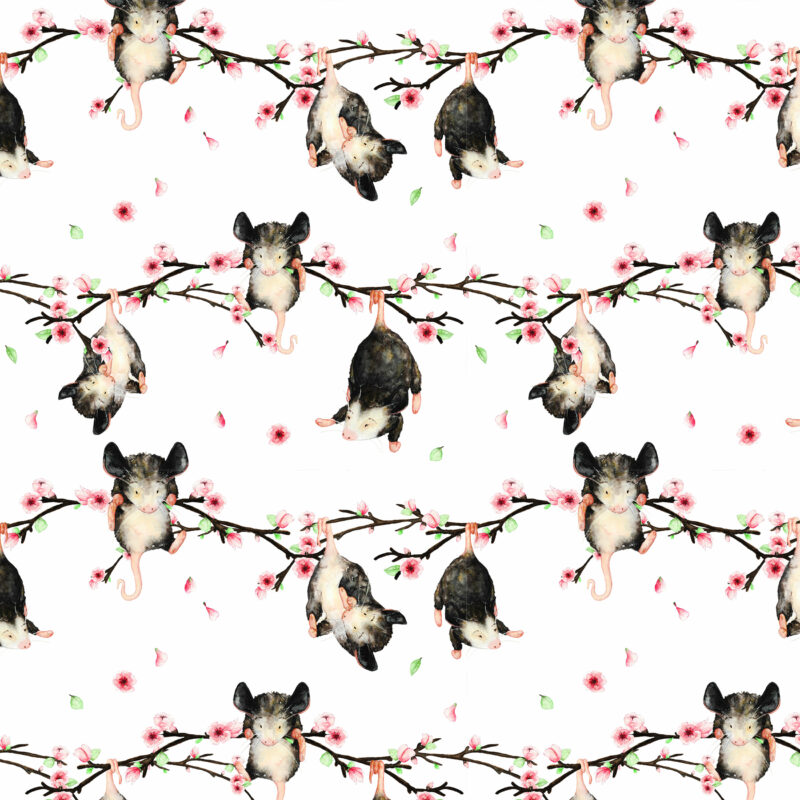Blogposts
Strickware vs. Webware
Was macht Strickware zur Strickware? Und was macht einen gewebten Stoff zu einem gewebten Stoff? Es liegt alles an der Konstruktion des Stoffes. Die Art und Weise, wie die Garne miteinander verwoben werden, bestimmt, ob du am Ende ein dehnbares Gestrick für das perfekte T-Shirt erhältst oder einen robusten gewebten Stoff für einen Quilt.
Bei Strickwaren wird ein einziges Garn verwendet. Dann wird der Faden immer wieder verschlungen, um eine Zopfstruktur zu erzeugen. Diese Zopfstruktur ermöglicht die Dehnung. Normalerweise ist die Dehnung in der Breite des Strickstoffs größer. Die Länge hat etwas weniger Dehnung.
Bei einem gewebten Stoff werden mehrere Garne verwendet, um ein rechtwinkliges Schraffurmuster zu weben. Durch diese Bindung entsteht die Maserung. Webstoffe haben so gut wie keine Dehnung.
Woran erkennt man, ob es sich um ein gewebtes oder ein gestricktes Material handelt?
Manchmal hat man das Glück, ein Schnäppchen aus dem Restpostenstapel im Geschäft zu ergattern. Aber wie erkennst du, ob es sich um einen geeigneten Stoff für das von dir ausgesuchte Schnittmuster handelt?
Schaue dir die Garne genau an. Du kannst die Bindung sehen (vielleicht mit einer Lupe, wenn du so blind bist wie ich). Wenn es sich um ein Gestrick handelt, siehst du die Schlingen, die sich durch das Flechten bilden. Ein gewebter Stoff hat ein schraffiertes Muster, fast wie ein Korbgeflecht.
Wenn du einen Strickstoff in der Hand zusammenrollst, lässt er sich leicht zerdrücken. Er springt genauso schnell wieder zurück und hinterlässt nur wenige oder gar keine Falten. Im Gegensatz dazu haben Webstoffe einen etwas knautschigen Widerstand und knittern leicht.
Webstoffe haben sowohl einen Fadenlauf als auch einen Querfadenlauf. Die horizontalen Fäden werden als Schuss bezeichnet; sie sind der Querfäden. Die vertikalen Fäden werden als Kette bezeichnet und bilden den Fadenlauf.
Richtiges zuschneiden:
Wie du dein Schnittmuster auf dem Stoff platzierst, ist für ein gutes Ergebnis entscheidend. Du wirst auf dem Schnittmuster feststellen, dass der Fadenlauf markiert ist. Befolge diese Anweisungen, um ein optimales Ergebnis zu erzielen!
Erinnere dich an die eine Hose…. Die, die du so hasst weil ein Bein nach der Hälfte des Tages völlig verdreht ist? Dieses Bein wurde gegen den Fadenlauf zugeschnitten.
Traditionell haben Strickwaren keinen Fadenlauf oder Querfadenlauf. Dennoch ist das Schnittmuster und die Stoffrichtung entscheidend für ein gutes Ergebnis. Bei Schnittmuster, die Strickstoffe vorsehen, ist der Fadenlauf markiert. Dieser Fadenlauf sollte in Richtung der oberen Schnittkante deines Stoffes zeigen.
So schwer es auch manchmal ist, mit einem pingeligen Jersey zu kämpfen, solltest du dir die Zeit nehmen, es richtig zu machen. Das Endprodukt wird es dir danken. Dies gilt auch, wenn du deinen Stoff faltest (doppelt nimmst zum Zuschneiden). Schau dss beide Faltlagen gerade sind. Nimm dir auch die Zeit, um sicherzustellen, dass das Schnittmusterpapier ebenfalls gerade ist. So verhinderst du, dass Nähte schnell reißen.
What makes a knit a knit? And what makes a woven a woven? It’s all in the construction of the fabric. How the yarns get woven together determines whether you end up with a stretchy knit for that perfect t-shirt. Or a sturdy woven fabric for a quilt.
Knits use a single yarn. Then, the thread is looped over and over again to produce a braid. This braid structure is what allows the stretch. Usually, there is more stretch on the width of the knit fabric. The length will have slightly less stretch.
With a woven, multiple yarns are used to weave a hatch pattern at right angles. This weave is what creates the grain. Wovens have next to no stretch in them.
How to tell if you’ve got a woven or a knit from the mystery remnant pile?
Sometimes you’re lucky enough to score a bargain from the remnant pile at your local shop. But how do you tell if it’s a suitable fabric for the pattern you’ve picked out?
Take a close look at the yarns. You can see the weave (maybe with a magnifying glass, if you’re as blind as I am). If it’s a knit, you’ll see the loops that form from the braiding. A woven will have a hatch pattern, almost like a basket weave.
If you ball up a knit fabric in your hand, it crushes easily. It will spring back just as quickly, leaving few if any wrinkles behind. On the other hand, wovens have a bit of crunchy resistance and will wrinkle easily.
Wovens have both a grain and a cross-grain. The horizontal threads are called the weft; they are the cross grain. The vertical threads are called warp and form the grain.
Cutting With Your Grain Marks
How you place your pattern on the fabric is essential for a good result. You’ll notice on the design that the grainline is marked. For the best results, follow those instructions!
You know that pair of pants you have? The ones you hate so much because halfway through the day, one leg is twisted all to crap? That leg was cut off-grain.
Traditionally, knits do not have a grain or cross-grain. However, the pattern and fabric direction are still critical for a good result. Patterns that call for knit or jersey fabrics will have the grainline marked. That grainline should point towards the top cut edge of your fabric.
As difficult as it is somedays to fight with a finicky jersey, you should take the time to get it right. The end product will thank you. This is especially true if you’re folding your fabric, so make sure both fold layers are straight. Also, take the time to ensure that the pattern paper is straight too. These details will prevent that dreaded traveling seam.
